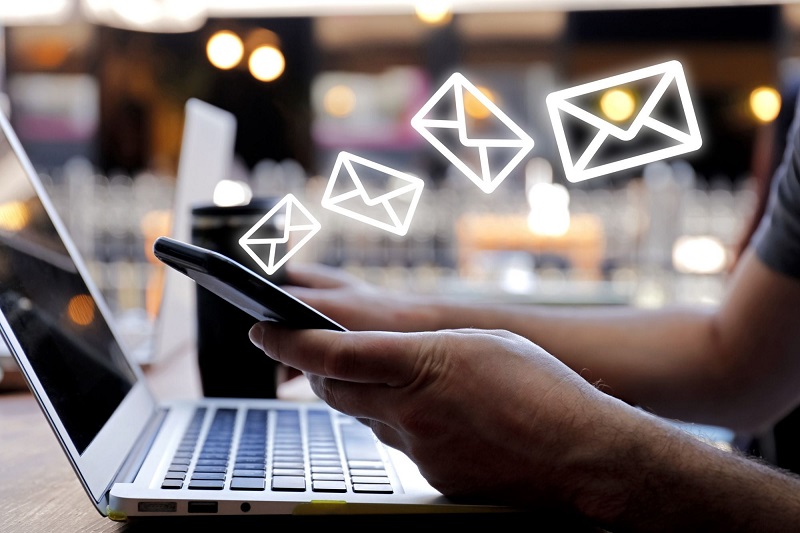Low open rates of emails are the first sign of poor deliverability for your emails. Emails mostly never make it to inboxes of customers and end up trashed in spam. One might wonder, why is it so? even if the “intent” is never to spam gullible people. Here is where it gets a little technical. Search engines and spam filters in email inboxes these days do not recognize the intent of the email and they have to completely rely on the “content” of the email to make a decision on whether the email is spam or not.
Ergo, if you do not follow the rather strict rules of email marketing and prepare your email to be immune to spam filters, then even unknowingly you would be wasting resources as your emails would just be sitting idle in spam folders of the hundreds of thousands of customers you reached out to.
We have identified 7 major reasons why emails are classified as “SPAM” by email filters. Let us have a look at them individually.
Reason 1: Body of the email is spam-like
Certain Email service providers have identified various keywords as characteristic spam and if they see it in your email then that email is going straight into the spam folder. Particularly words which can be classified as ‘manipulative’, ‘pushy’, ‘sleazy’, and words coming in related categories invoking a negative emotion of convincing.
Furthermore, a poorly worded email with under-par grammatical accuracy will be marked as spam. The reason for this is that many spam emails are intentionally written poorly so ideally for the spammers the victims will be the most gullible people. Unnecessary use of Big fonts, flashy colors in the copy and extensive use of exclamatory symbols is a big NO for many email service platforms.
If your email has any links, then you should take extra care that those links are verified and are identified as secure. If you are using URL shorteners then care should be taken that the shortened links are not generic. You can use the shorteners which allow you to brand your URLs.
Reason 2: Flaws in Email Design
The way your email is designed also makes a huge difference whether it lands in your lead’s inbox or the spam box. For starters, you should maintain a reasonable Image-to-Text Ratio with both image and text used considerably to their capacity. The reason for this is, to avoid spam words being detected, spammers tend to fit all of their ‘spam’ content in one single image banner. Nowadays, Email platforms recognize that and a skewed image/text ratio will easily help your email into the spam box. Not so pleasant, Right?
More than half of all the emails are now read on mobile devices, so if your email isn’t optimized to load in a mobile platform, users may start marking your email as spam and after a while, the filters take this as the input and put all the emails with similar loading issues in the spam folders.
In this tech business being too flashy can be a problem sometimes, quite literally. If you wish to make your emails more appealing by using Javascript scripts and flashy CSS and HTML, then this is the time to take a step back. Many email providers consider the use of such ‘flash’ content as being too sensitive for email and ergo they block it. You can use GIFs to make your emails appealing.
The last part of the design entails the email itself. Elements such as Subject Line, From Name, Salutations, Plain text for the email should be added on priority. Sending subject-less emails is a pretty decent marketing strategy to increase open rates but it isn’t worth much in the long run as it annihilates your IP reputation.
Reason 3: Violation of Specific Rules
There are certain unsaid rules in email marketing that are quite important than the listed ones. The presence of an ‘unsubscribe link’ is one of them. No law mandates this but many email providers consider the addition of a ‘unsubscribe link’ in the header as a good sign. Hey! And we are anyway doing this for good sender reputation, correct?
Broken HTML also doesn’t go very well with spam filters. This is mostly the case with poor optimization. The overall size of your email should not exceed 100KB. There is no specified limit on email size but the 100 KB limit is widely accepted in the community. A particular study found that deliverability issues arise when the email size exceeds 125 KB. If you are sending any ‘binary attachments’ in your email, then you need to make sure that they are not ‘marked as unsafe’ by email providers. Any suspicious attachments with the email can be used by spammers to collect user data hence, ESP’s are generally paranoid about binary attachments in emails.
Reason 4: Domain Reputation
Think about this as your credit score. A higher one will get you a good loan and a low score will mean no bank gives you importance. The same goes for the deliverability of emails.
Many email campaign service providers have strict DMARC (Domain-based Message Authentication, Reporting and Conformance) policies. A free email such as Gmail or Yahoo won’t do you any good. You would need your own domain to pass the DMARC checks. Our awesome people at Adcrux can help you out with this.
Spam filters in the modern world are one sneaky for an engine. They analyze every pattern associated with your domain. Spam signals from users explicitly certify unsolicitation. Consequently, if a lot of people are marking your emails as ‘spam, then this will completely destroy your sender reputation. Sending irregular volume is a typical ‘spammer’ behaviour that will not go unnoticed through spam filters.
Reason 5: Bad IP Reputation
Just like the reputation of your domain, the IP reputation which email marketing platform providers use also makes a huge impact on the deliverability of your emails. IP warm-up is the first thing that you should check for with your marketing platforms. A poorly warmed IP is as good as a spam email. IP warm-up strategy plays a key role in email deliverability and if done perfectly could potentially save you thousands of dollars in capital.
Along with this, there are some technical particularities that need to be done on part of your Email service providers or campaign platform providers to optimize deliverability. The IP server has to be properly configured with headers, encryption codes, authentication parameters, etc. It is required to have a TLS (Transport level Security) encryption protocol over SMTP (Switch mode transfer protocol) for your emails due to the inherent nature of SMTP being unencrypted. Many email marketing platforms provide a Return Path certificate for better analysis of the campaign’s performance. This is generally seen as a certificate of authenticity by many email filters.
Reason 6: Email Authentication Fail
If you are sending an email to your friend using your personal email using Gmail, then your email will be automatically authenticated. This is a little different when you are sending emails to thousands of people. Most of the time you would use an email marketing solution like Adcrux. This would mean that Adcrux will have to authenticate your domain to allow it to send emails over its IP. Spam filters give special attention to this authentication as this technique is used by spammers to leverage the good reputation of IPs provided by many email marketing companies
Some Common mistakes related to Email Authentication:
SPF (Sender Policy Framework): Detects forged sender address in emails. Basically, a TXT DNS entry that authenticates emails. So, all emails which cannot be traced back to these servers will be discarded.
DKIM (Domain Keys Identified Mail): It is another type of DNS record that helps us understand that the email is coming straight from the domain it says it has and hasn’t been tampered with along the way. It must be ensured that your emails have these records.
DMARC (Domain-based Message Authentication, Reporting, and Conformance): It is a type of declaration which says that the domain owner comprehends email authentication and the receiver should get all authentication records including SPF and DKIM.
Using a via Domain: If your ESP does not authenticate your sending emails, then you might be restricted to using ‘via’ domains. This can be a two-edged sword. The reputation of the domain can be good, in which case your emails will be rewarded, but on the other hand, as those domains are used for different senders with varying sending habits which can work against you. The moral being, always ask your email marketing provider for domain authentication.
Reason 7: Open Rates and Engagement
It all comes down to value addition in the end. If your contacts are constantly ignoring your emails over a period of time then after a while spam filters will have all the reason in the world to think that you are not adding any ‘value’ in their inbox. Not only are you wasting money marketing to an unresponsive segment, but you are also undermining the amount of time and other resources which are involved in it.
How can you overcome this issue?
Double Opt-in: Value is created when people engage with your email. It hardly depends on the size of your list. Double Opt-in increases your domain reputation and concentrates your resources on a profitable endeavour.
‘Good’ email addresses: Often to hide identity or avoid being detected, proponents of malicious content use addresses such as ‘axssdfs@domain.com’, ‘shshsgsgs@yahoo.com’, etc. This is a big STOP sign for spam filters. We suggest the use of respectable and traceable addresses such as ‘outreach@company.com’, ‘sales@firm.co’, ‘feedback@corp.com’, etc.
Segmentation: Does everyone in your family have the same favourite sport? Does everyone like to eat the same food? The same is the case with your leads. Different people, different needs. Luckily with the help of today’s Data analytics platforms, you can segment your audience into marketable segments. Segmentation would allow you to give the people exactly what they want, exponentially propelling your engagement.
Takeaway
Spammers are not going anywhere. They will continue to fish for the most gullible internet users. It is only for the better that spam filters also keep improving. This brings about a different challenge for genuine email marketers. How to identify yourself differently, is the question here. The points mentioned above can definitely help you on a technical level to avoid being thrown into spam boxes but what matters the most is the ‘feel’ of your content and the ‘value’ that your email adds to the user’s inbox. Overall, creating a good sender reputation takes time and to reap the full benefits of email marketing, you need to start slow. Note: For all the technical details mentioned above, please contact us at ashley@adcrux.io and we’ll help you set up a perfect campaign while keeping in mind the details of this article.
Guest Post Service By www.guestarticlehouse.com




